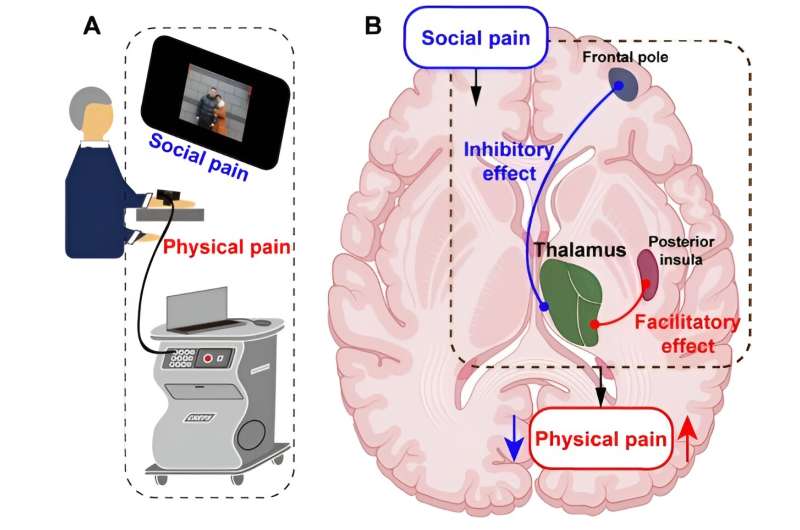This article has been reviewed according to Science X's editorial process and policies. Editors have highlighted the following attributes while ensuring the content's credibility:
fact-checked
peer-reviewed publication
trusted source
proofread
The paradox of feeling hurt: Study finds social pain both facilitates and inhibits physical pain

There are generally two types of pain: physical pain, which is associated with actual or potential tissue damage, and social pain, which is associated with negative social experiences. In daily life, people sometimes cannot avoid experiencing both physical and social pain. However, the effect of social pain on physical pain perception during interactions remains unclear.
To address this gap, a research team led by Dr. Kong Yazhuo from the Institute of Psychology of the Chinese Academy of Sciences conducted a series of studies by combining physical pain and social pain to examine the effect of social pain on physical pain perception. The study, "The dual facilitatory and inhibitory effects of social pain on physical pain perception," is published in iScience.
The researchers recruited college students who had recently experienced a passive breakup. Photographs of the participants' ex-partners induced social pain based on romantic rejection, while physical pain was induced by heat pulses within 50°C. Participants were required to perceive and report their perceptions while simultaneously experiencing the heat pulses and viewing the photo of their ex-partner.
The researchers observed a paradoxical effect of social pain on physical pain, i.e., facilitation and inhibition of physical pain. Social rejection by one's romantic partner facilitated the perception of physical pain when individuals were not focused on their social pain, and inhibited the perception of physical pain when individuals were focused on their social pain.
The brain's posterior insula encoded the facilitatory effect, while the frontal pole was involved in the inhibitory effect. At a higher level, the thalamus further modulated both processes, playing a switch-like role under different states of concern about social pain.
These findings of the dual pathway mechanism imply the possibility of psychological regulation to moderate the perceptual processing of noxious stimuli, which would benefit human mental health and well-being, especially for those patients who suffer from social pain due to their illness (e.g., mental disorders, physical disabilities).
More information: Ming Zhang et al, The dual facilitatory and inhibitory effects of social pain on physical pain perception, iScience (2024). DOI: 10.1016/j.isci.2024.108951
















